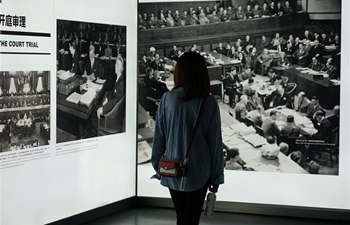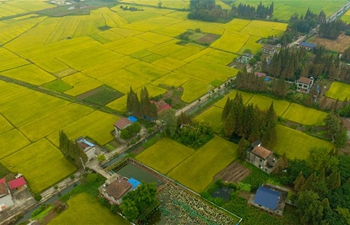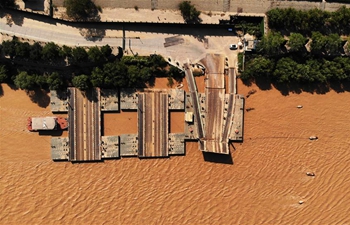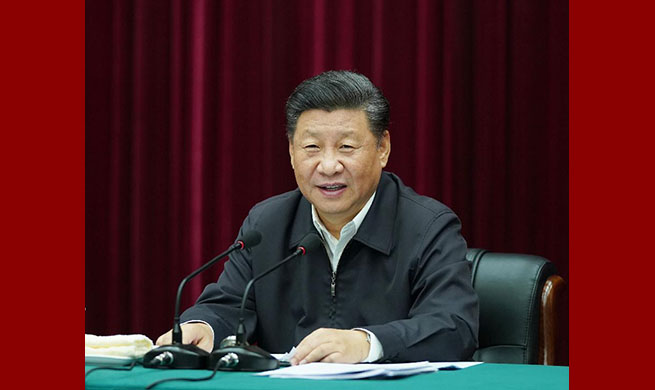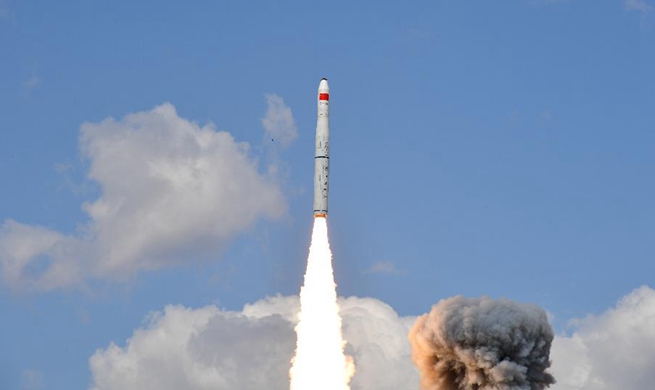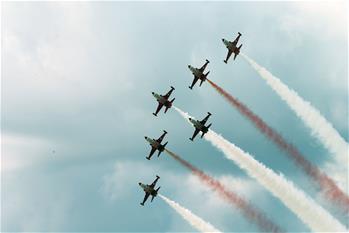by Burak Akinci
ANKARA, Sept. 19 (Xinhua) -- Turkey is pushing hard for the creation of a safe zone at its border with Syria that would ease its security concerns and also become a gateway for the resettlement of huge numbers of refugees, but its grand plans may prove unfeasible, experts cautioned.
Turkish President Recep Tayyip Erdogan said on Wednesday that a planned "safe zone" in northeastern Syria could host 2-3 million Syrian refugees that have settled in Turkey and Europe after eight years of war at home.
In a public speech in Ankara, Erdogan also repeated that Ankara would act on its own in two weeks if the zone, planned jointly with the United States in Syria's northeast, bears no results soon, expressing renewed frustration of U.S. foot dragging.
"Through making east of Euphrates (river) a safe place, and depending on the depth of this safe zone, we can resettle 2-3 million displaced Syrians currently living in our country and Europe," he said.
In previous statements, Erdogan has said one million Syrians could be moved to the safe zone and has even pledged to build new homes for refugees there although the exact depth and length of the zone are yet to be agreed upon.
"We want to see strong support from European countries, both on the issues of Idlib and the region east of Euphrates. We are fed up with words, and we expect action," Erdogan added.
Next week, Erdogan and U.S. President Donald Trump will discuss plans to establish what Turkey describes as a safe zone along its 450 km border with Syria stretching from the Euphrates river to the Iraq border, a region controlled mainly by U.S.-backed Syrian Kurdish YPG (People's Protection Units) fighters.
The YPG, considered a terrorist movement linked to the Kurdistan Workers Party (PKK) by Ankara, has been a main U.S. ally in the fight against Islamic State in Syria.
U.S. support for the fighters has infuriated Turkey and strained Ankara's ties with Washington which has an estimated 2,000 strong military forces in northern Syria.
"We will initiate our own plans in two weeks if no results come from the work with the United States on the formation of a safe zone," Erdogan repeated, warning once again of unilateral action.
Erdogan's proposal has raised concerns over the feasibility of such a massive undertaking among experts, who told Xinhua that it would prove rather impossible to send such large numbers of Syrians in a narrow stretch of land.
"Turkey has abided to international conventions and refrained from sending refugees to conflict zones. The proposed safe zone would be established in a buffer zone between Turkish soldiers and Kurdish fighters, so it would be impossible to resend civilians there," Metin Corabatir, head of the Research Center on Asylum and Migration (Igamder) in Ankara, said.
He also reminded that any resettlement should be made under strict conditions, the first of which should be on a voluntary basis.
"It is impossible to transfer refugees in a buffer zone" between belligerent forces, added Corabatir.
Omar Kadkoy, a policy analyst at the Economic Policy Research Foundation of Turkey (Tepav), said that a "pull factor" has to be created for Syrians wanting to return, and that "infrastructure must be built and economic opportunities must be generated to accommodate the various need of potential returnees."
Kadkoy, a refugee himself, explained that Syrians established roots in Turkey, entering the labor market and sending their children to schools.
"Giving up on all that to return to a bleak future in a place that isn't the original place of habitat would be, for the majority of Syrians in Turkey, an unnecessary gamble," he remarked.
According to the United Nations refugee body UNHCR, a majority of Syrians who are in Turkey come from the West of the Euphrates and Aleppo, located hundreds of km from the region where a safe zone is supposed to be established, a factor which would add to the reluctance of refugees to return.
Meanwhile, Turkish Interior Minister Suleyman Soylu said on Thursday that some 354,000 Syrians returned to their homeland in the territory cleared by two previous cross-border Turkish military operations since 2016.
Erdogan is already under great domestic pressure regarding the huge size of the Syrian refugee community that his country is hosting under crippling economic difficulties.
This situation has triggered a rising anti-refugee sentiment among the local population.
Ankara has repeatedly said that it would not stomach a new influx of refugees and Erdogan has threatened to send refugees to European countries, asking more financial support from them.
The flow of migrants through Turkey to the Balkans and into the European Union (EU), which peaked in 2015, slowed significantly after the EU struck a deal in 2016 to pay Ankara more than 6 billion euros (about 6.6 billion U.S. dollars) to tighten its borders.
"If we cannot establish peace in Idlib swiftly, we will be unable to shoulder the burden of 4 million Syrians living in that region," Erdogan added.
Regarding a possible wave of refugees from Idlib, Corabatir recognized Turkey's concerns as truly legitimate and founded, and proposed that these civilians be relocated in available conflict-free parts of Syria, mainly under the protection of the United States and other coalition forces.
"There is a formula called Internal Flight Alternative within international law, which could be put into motion, however the United States should take responsibility" for the safety of future refugees, he argued.






